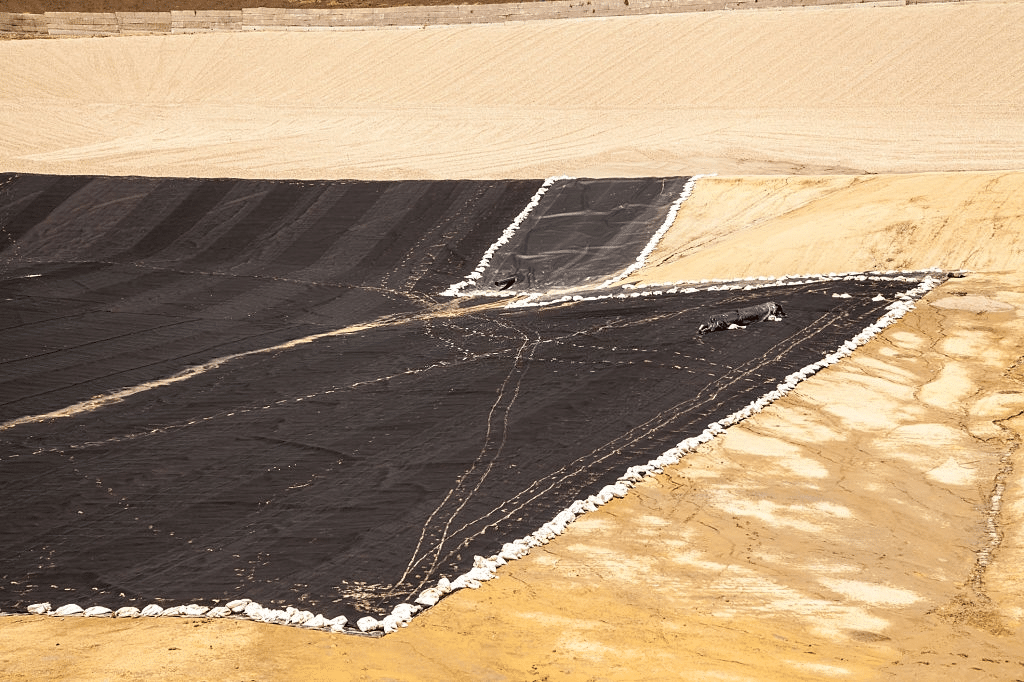What are the Geomembrane Types?
- HDPE Geomembrane. HDPE geomembrane is High-density polyethylene, it is the most used geomembrane liner in the world, because of its long service life, strong technical property, and competitive price.
- LLDPE Geomembrane.
- PVC Geomembrane.
- EPDM Geomembrane.
What is the difference between geomembrane HDPE and PVC?
PVC geomembranes are flexible and relatively easy to handle, while HDPE Geomembranes is tough and non-flexible. HDPE geomembranes tend to exhibit a sharp peak in their stress-strain curve and therefore, tend to undergo a relatively abrupt failure whereas PVC undergoes a very large amount of elongation before failure.
What is the advantage of geomembrane?
Furthermore, the material is a very stable polyolefin that is chemically inert and able to maintain long-term integrity and durability. These properties make the HDPE geomembrane a popular choice to waterproof and seal landfills and other containment applications.

Installation of Geomembrane Lining Systems
Geomembrane lining systems have been around for over 50 years. As environmental concerns become more prevalent, these lining systems are a practical means to prevent pollutants from contaminating water sources. Geomembranes are a type of synthetic (actually geosynthetic) material that is comprised of impermeable membranes. In essence, a geomembrane liner is a synthetic hydraulic barrier. These systems can be utilized to contain hazardous waste byproducts, control odors, collect gas, preserve potable water sources, grow food in aquaculture applications, waterproof dam faces and control effluents. The benefits of using geomembrane lining systems are vast, especially if one considers the need for water quality improvement resources across the globe.
Installing geomembrane lining systems is a complicated process that is generally carried out by trained engineers and technicians. Various specialized welding techniques, site preparation, and installation expertise are required to ensure that any geomembrane lining system is properly employed.
Pre- Field Installation: Preparing for the installation is the initial step. The following decisions need to be considered:
- Specifications of the geomembrane that will be used.
- The type of anchoring system that is needed.
- The quantity of geomembrane lining.
- Which quality controls will be in place.
- What are the weather conditions as temperatures play a significant role in if and how the installation process will be completed.
Receiving, Storing and Handling: The following factors need to be considered when the product arrives.
- It is required that each roll have an identification number and quality certificate.
- Unload the rolls with approved equipment to prevent damage. Spreader bars or lifting straps can be utilized to accomplish this.
- Visual inspection of the outside of the rolls should reflect that there are no holes, tears or bubbles. Any non-conformance damage that is identified will be noted and recorded. Non-conforming material will either be repaired to conformity, or used in a manner that is appropriate to its use.
- The surface of the storage area needs to be free of stones and any items that could puncture the linings, mud, grease and chemicals. The rolls can be placed on wood platforms or sandy mattresses. The surface should also not be near a heat source. Rolls should not higher than 3 on top of one another
- The storage location needs to be in a location that minimizes the handling of the lining.The actual geomembrane installation has many steps within the entire process.
While the installation process is an involved endeavor, the required effort only illuminates the utility of geomembrane lining systems as a proven commodity for pollution containment.
